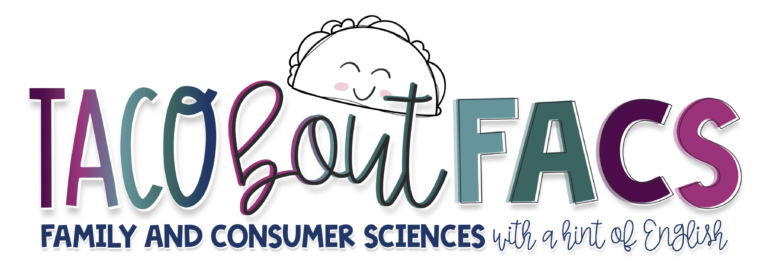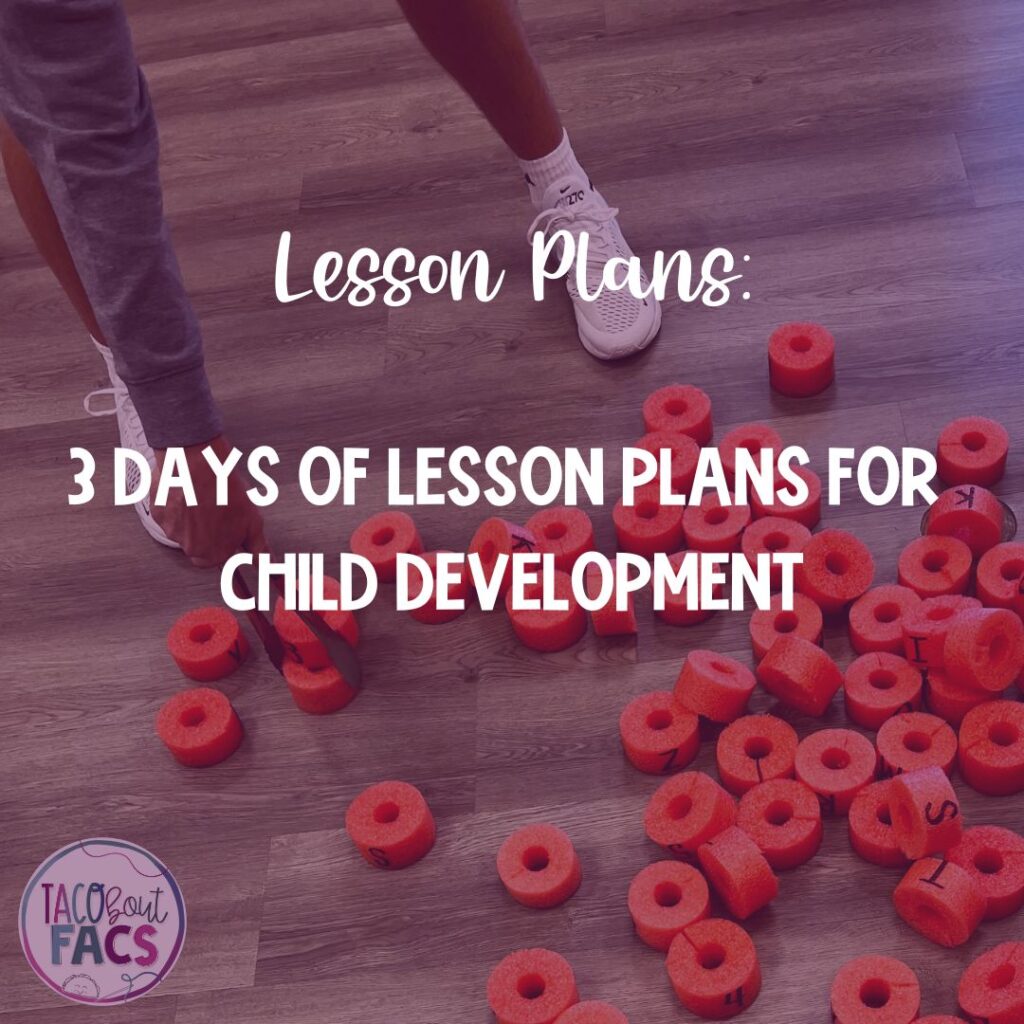Three Days of Lesson Plans
To help build background knowledge, students had two separate flip books to learn more about developmental milestones and a day of play. Learn more about the three-day lesson plans below.
It should be noted the two flipbook days filled up almost a full 40 minutes between cutting out and assembling the flip book and discussing the information from the presentation to write on the flip book.
Stages of Early Childhood Development
The first day is the Stages of Early Childhood Development flip book. On this day, after students assembled the books, we discussed the various stages of early childhood development. They learned the typical amount of sleep needed, milestones, and age range.
It brought up a great conversation as some could remember how old they were when they started walking or saying their first word, etc.

Fine and Gross Motor Skills
On the second day, we covered fine and gross motor skills with another flip book. This was more challenging for students to comprehend because they are old enough they do not remember these phases or learn to do new tasks.
This flip book also covers various milestones for fine and gross motor skills throughout the first few years and also activities they could do when babysitting to help a child develop these skills.
To help them learn these phases better and the importance of dexterity, they were able to practice an activity that would represent the pincer grasp.

Hands-On Activity
This is where old pool noodles will work perfectly. I took two pool noodles and cut them into 2-inch tall sections. There were enough to cut 26 for each letter of the alphabet and 10 for numbers 1-10.
I divided my class into two groups. Each team was grouped in the back of the room and one person from each team would walk (running cost you a 30-second delay) to the other side of the room with a pair of tongs. They would use the tongs to pick up the pool noodle piece and walk back. Both teams’ pieces were piled together, meaning the pile had 2 As, 2 Bs, and so on.
Each team had to put the letters and numbers in order. The fastest team won. Next time I think I will tell them they have to pick up the letters and then the numbers in order.
Play in Child Development
What better way to help students learn the importance of these milestones than a day of playing card games? Using my classroom budget, I bought sets of Uno, Skipbo, Phase 10, and a couple of other newer card games that would work for this day.
I’m sure you’re wondering how a day playing card games seems appropriate. That is exactly the conversation I had with my students before we started playing.
“How is play a vital piece of child development?” This time I let it be a discussion piece, but I also considered making them write their answer in reflection form. I do love a good reflection writing piece, but I was impressed with their contributions to the discussion and felt it covered it.
Some of their answers included
- understanding the need for kids to “cross their midline” to help both sides of the brain connect and grow
- build social skills
- help with number, color, and letter recognition
- Learn patience and take turns
- Builds relationships
I was impressed! They listened when taking notes, but they also were able to think further than the notes about ways play is an important part of child development.
These lessons all fit inside three 49-minute class periods. If you are interested in getting the flipbook resources, you can get them in my TPT store. The Stages of Early Childhood Development flipbook is here and the Fine and Gross Motor Skills flipbook is here.

